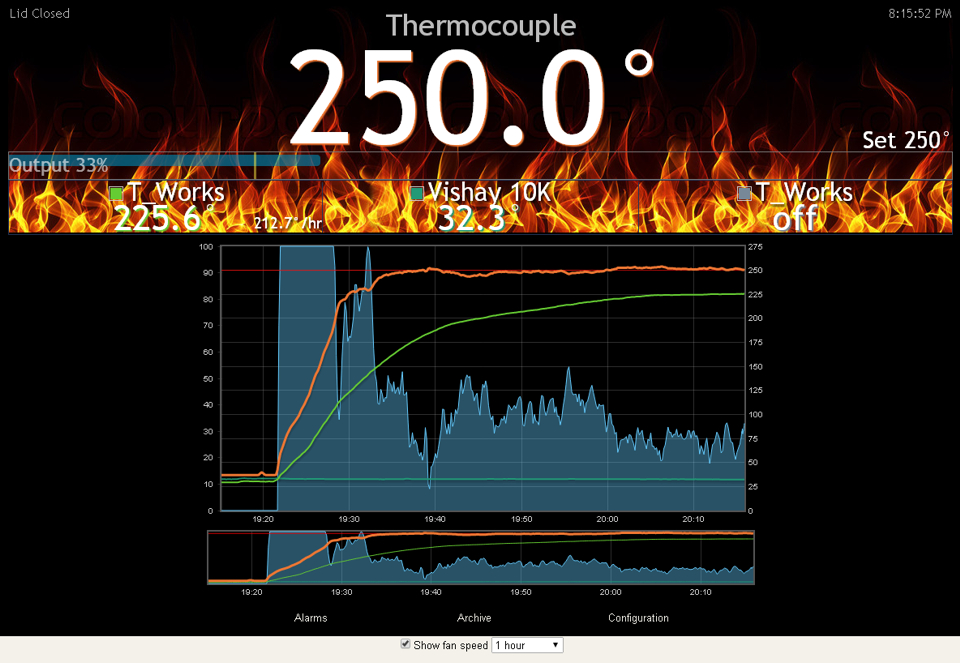Mike Wallace
TVWBB Member
Guys I'm having trouble with using the HM to maintain 225 on my Keg. I have Ralph's rotodamper. I tape all around the bottom vent with aluminum foil ductwork tape. Top vent at 1.5. I use a 15" round 3/4" thick pizza stone lowered into the firebowl for a diffuser. I fill the firebowl pretty full, above the holes, and light with looflighter in the middle top of the pile. I've tried Bryan's egg settings. I've tried Dale's keg settings. Have the fan set to max 50%. On all the time (not at max only).
1. For startup I light the fire, put the diffuser in right away, and put the cast iron grate on the upper setting. I set the pit temp to 150. It fires right past the 150, and keeps going to over 200 and starts leveling off around 210. When it levels off, I bump the pit temp up in 5 deg increments until I hit 225.
2. Once I am around 225, the first time it drops below 225, the HM stokes the fire, it overshoots to 228-230. At this point it has to shut down to 0% until the temp drops. This takes 15-20 mins. At this point the fire goes out and when the damper finally opens and fan kicks in when dropping past 225, it's too late. I have to take everything out and relight.
How are you guys lighting your fire, and what are you using for a diffuser? I'm wondering if the thick pizza stone is too much.
1. For startup I light the fire, put the diffuser in right away, and put the cast iron grate on the upper setting. I set the pit temp to 150. It fires right past the 150, and keeps going to over 200 and starts leveling off around 210. When it levels off, I bump the pit temp up in 5 deg increments until I hit 225.
2. Once I am around 225, the first time it drops below 225, the HM stokes the fire, it overshoots to 228-230. At this point it has to shut down to 0% until the temp drops. This takes 15-20 mins. At this point the fire goes out and when the damper finally opens and fan kicks in when dropping past 225, it's too late. I have to take everything out and relight.
How are you guys lighting your fire, and what are you using for a diffuser? I'm wondering if the thick pizza stone is too much.

